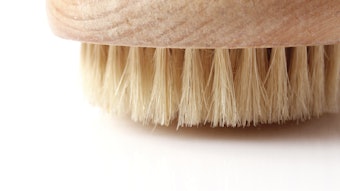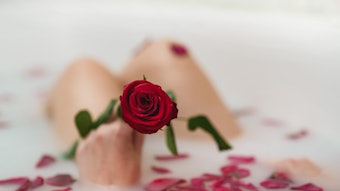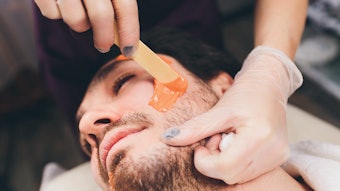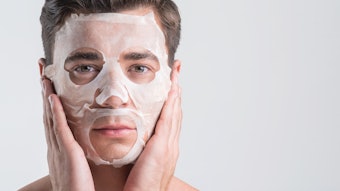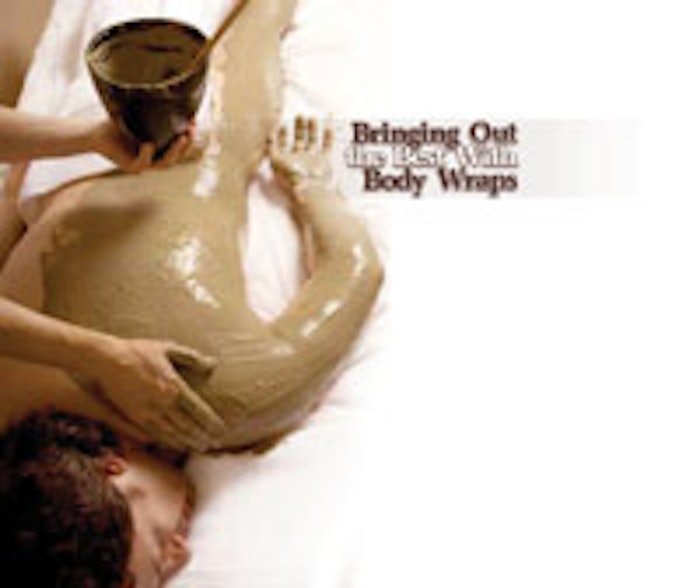
Body wraps have gained popularity in recent years as a way to quickly lose inches in all the right places; however, there has been considerable controversy as to whether they actually work in this way. On the other hand, little attention has been paid to the use of body wraps as skin care treatments. Using the same methods of body wrapping, treatments can be developed for dry skin, eczema, psoriasis, anti-aging and many other skin conditions. The key to such services is incorporating ingredients that are proven to give the results claimed.
Exfoliation and massage
Most body wrap services begin with exfoliation in order to make the skin ready for the next steps. Exfoliation is the process of mechanically or chemically removing dead skin cells that allows younger, fresher cells to come to the surface. These younger cells are better able to accept the nutrients delivered to them through cosmetics. Both mechanical and chemical exfoliation can also impart nutrients to the skin. Mechanical exfoliation sloughs off dead skin cells with the aid of physical abrasives or scrubs that can include oils and ingredients that scrub while acting as conditioning agents. Chemical exfoliation uses alpha hydroxy acids or beta hydroxy acids to loosen the bonds of older skin cells, which are then rinsed away. In spite of the benefits, care should be taken when working with chemical exfoliants because they can cause skin irritation.
Although body wraps are, without a doubt, esthetic treatments, employing a simple relaxation massage can go a long way in client experience. The massage can be incorporated in the application of the scrub performing the double-duty of exfoliating the skin while simultaneously improving circulation.
Anti-aging oils for scrubs
Because of the effects of mechanical and chemical exfoliation, they make a great start to an anti-aging body wrap treatment. The effectiveness of anti-aging body scrubs can be ramped up by incorporating carrier oils with anti-aging properties. One such oil is baobab (Adansonia digitata) seed oil, which has a high content of oleic, linoleic and palmitic unsaturated fatty acids.1 Oleic acid has been studied as a skin-penetration enhancer allowing for better delivery of topical cosmetics to the stratum corneum.2 The concentration of oleic acid in baobab oil is 35.8%, followed by linoleic acid at 30.7% and palmitic acid at 24.2%. In studies related to moisture retention in the stratum corneum, linoleic acid was found to help reduce transepidermal water loss.3 Moisture retention plays a major role in the function and appearance of the skin, and, because of this, the presence of linoleic acid in a cosmetic ingredient is beneficial.
The body needs minerals for the proper structure and function of cells, and they are lost from the skin daily as a normal process and as a result of excessive sweating.4 Various cosmetic ingredients can supplement some mineral loss. Sea salt, for example, contains a significant amount of minerals, including calcium, potassium, magnesium and iron. Baobab seed oil is also rich in potassium, calcium and magnesium. Combined, sea salt and baobab oil make an effective nourishing, anti-aging scrub leading into a body wrap treatment.
Body wrap methods
There are two generally accepted methods of body wrapping. The first is to soak cotton body wrap sheets in a treatment solution and start wrapping the body beginning at the feet. This method is best used when the cosmetic ingredients have been dissolved in a water base because sheets absorb the solution and keep it close to the skin. Often, the client is also wrapped in plastic sheets to lock in the moisture and the warm temperature. Because the skin is able to absorb both liquid water and water vapor, maintaining the warm temperature of the wrap is ideal for optimal moisture absorption.5 Lactic acid, a component of sour milk or yogurt, can improve the texture and firmness of skin relative to the concentration used in the treatment.6 Yogurt powder is a great ingredient to use in a water-based body wrap because it is easily dissolved. Herbal ingredients, such as carrot root powder—which is rich in the powerful antioxidant beta carotene—also make good additions to water-based wraps.
During the second method of body wrapping, a heavy cream, lotion or mask is applied using a body brush, and then the client is wrapped, beginning with the ankles, in plastic body wrap sheets. The plastic wrap is used to lock in the moisture and other beneficial ingredients. For this type of wrap, butters, clays and oils are ideal ingredients. Coffee bean butter from the Coffea arabica plant exhibits superior antioxidant activity in comparison to green tea and even vitamin E.7, 8 This butter has a smooth texture and blends well with various oils. Argan (Argania spinosa) nut oil is an exotic oil that has gained popularity in recent years. Because of its high content of oleic and linoleic acids and tocopherols, argan oil can potentially act as a penetration-enhancer, helping retain moisture in the skin and exhibit antioxidant activity.9 These properties make argan oil an excellent ingredient for anti-aging treatments. With both body wrap methods, the client should remain wrapped for at least 20 minutes to allow the skin time to absorb the ingredients.
Marketing
If full body treatments are completely new to your spa, introduce them to regular clients who seem to have an interest in caring for their bodies, such as massage clients. Allow them the option to add the body wrap treatment on to their massage at an introductory rate. Be sure to explain the benefits of the treatment so that the client knows what results to expect. Also, be sure to market the body wrap as you would a facial, because regular treatments throughout time will impart better results; healthier, younger-looking skin is a gradual process and should be marketed as such.
Another way to introduce the concept of body wraps would be to match the treatment with the seasons. For example, the summer months bring with them excessive sun exposure. A body wrap that is antioxidant-rich and soothing for sunburn relief would be ideal for clients who spend a lot of time outdoors or who are returning from vacation. Similarly, winter months bring dry skin woes and eczema flares. Moisturizing and emollient-rich body wraps should do well in regions that experience cold winters and for spas that have clients who suffer from these skin conditions.
Improving profits and self-esteem
Whenever a new treatment is being implemented, it is important to consult with an ingredient supplier or a cosmetic scientist to help with development. Bear in mind, even natural ingredients have their safety limits and these experts will also be able to help determine which ingredients will meet the goals of a new treatment. Encouraging clients to treat their whole bodies will not only increase spa revenue, but will also improve client self-esteem.
REFERENCES
1. AM Osman, Chemical and Nutrient Analysis of Baobab (Mansonia digitata) Fruit and Seed Protein Solubility, Plant Foods for Human Nutrition 59 29–33 (2004)
2. H Tanojo, HE Junginger and HE Bodde, In vivo human skin permeability enhancement by oleic acid: transepidermal water loss and Fourier-transform infrared spectroscopy studies, J of Controlled Release 47 31–39 (1997)
3. PJ Hartop and C Prottey, Changes in transepidermal water loss and the composition of epidermal lecithin after applications of pure fatty acid triglycerides to the skin of essential fatty acid-deficient rats, Br J of Derm 95 3 255–264 (2006)
4. HH Mitchell and TS Hamilton, The dermal excretion under controlled environmental conditions of nitrogen and minerals in human subjects with particular reference to calcium and iron, J of Biol Chem 178 345–361 (1949)
5. O Jacobi, Water and water vapor absorption of the stratum corneum of the living human skin, J of App Physiol 12 3 403–407 (1958)
6. WP Smith, Epidermal and dermal effects of topical lactic acid, J of the American Academy of Dermatology 35 3 1 388–391 (1996)
7. JJM van de Sandt, et al, In vitro predictions of skin absorption of caffeine, testosterone, and benzoic acid: a multi-centre comparison study, Regulatory Toxicology and Pharmacology 39 3 271–281 (2004)
8. IB Allemann, and L Baumann, Review: Botanicals in skin care products, Int J of Derm 48 9 923–934 (2009)
9. M Hilali, et al, Influence of Origin and Extraction Method on Argan Oil Physico-Chemical Characteristics and Composition, J of Agric and Food Chem 53 6 2081–2087 (2005)
Desiree Mattox is the owner and lead chemist of Envié Bath and Body, a contract manufacturing company. She specializes in developing natural and organic products, focusing special attention on ingredient benefits.




